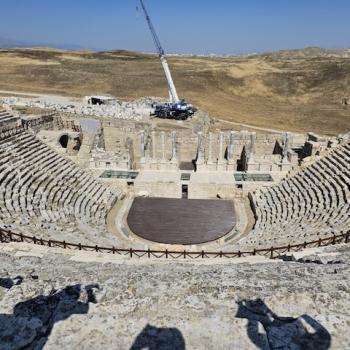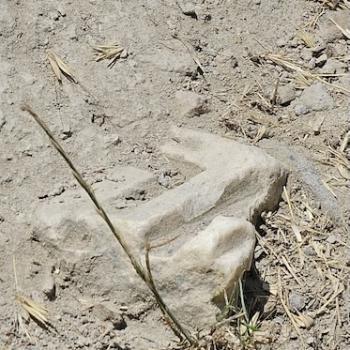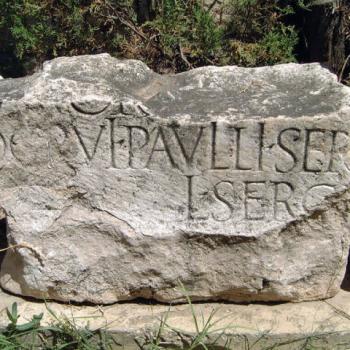It’s not every day that you have a Disney movie, or any movie about Dias Muertos, or the Day of the Dead, much less a movie mostly set in the land of the dead, which raises all sorts of questions about the after life. What few will know is that this theology of the afterlife goes back to pagan antiquity, and was brought over into the Christian religion by Gentiles. This whole early history of such ideas is helpfully chronicled in Ramsay McMullan’s last great book entitled ‘The Second Church’. I recommend it. In great detail he shows how new Christians brought various of their pagan customs with them into their new religion including the belief that the spirits of the dead not only could be contacted, but could be both an influence on the living, and be influenced by the living. They were not in heaven or hell, just in the land of the dead. Probably, 1 Cor. 15 alludes to these beliefs existing in the Corinthian church when Paul refers to the practice of proxy baptism— that is, baptism of a living person for the spiritual benefit of a dead person (something still practiced in Mormonism). Pagans would normally visit the tombs of the dead on their birthday or death date, and have a party on the tomb— pouring a libation of wine through a spout into the tomb, believing they could celebrate with the living. Equally important was the keeping of death masks in the home in a cabinet, and consulting the ‘genius’ or spirit of one’s ancestors who were believed to inspire good ideas and good advice in the living. This latter is very much like the practice in Latin America of Dias Muertos, where it is believed that the ancestors’s spirits come on that day to visit with the living, and that the living are required to keep a shrine in which their pictures are found so they will be remembered forever, and can be met spiritually on the Day of the Dead. This actually has little or nothing to do with the Catholic practice of praying to known and recognized saints (e.g. St. Anthony or St. Christopher), because Dias Muertos is all about one’s own family members, good bad or ugly, not about notable saints.
This is of course a rather long introduction to a movie review of ‘Coco’ which some have already celebrated as the movie of the year. I will not be joining them, though this is indeed a brave and very interesting movie. Not once is God or Christ brought into the picture, and notice as well in the short subject from Pixar before the feature film, we hear about any and all kinds of Christmas season celebrations including Jewish ones, but notably no reference to Jesus. Typical. This short subject is a Frozen sequel prequel, and it pretty much falls flat, like the snowman Olaf, again and again.
Let’s first say what is good about ‘Coco’. It’s beautifully filmed, and its message that family is very important is a true and good message. The characters are interesting and the plot centers around a young boy Miguel who wants to become a musicians, but is prohibited to do so by his family because way back when, the ancestor who was a famous musician left home and never came back. Coco is Miguel’s living grandmother or great mother who’s father it was who disappeared following his dream of being a musician. So Miguel even has to go to the other world to get a blessing to play guitar and sing. Part of the message of this film is a mixed message— on the one hand family is top priority, we are told, on the other everyone should follow their dream— a much more individualistic and in some cases narcissistic pursuit.
The cinematography is spectacular. There are some scary scenes involving the dead and ‘spirit guides’ in the afterlife, with ‘spirit guides’ being yet another piece of pagan folk religion that was brought into Latin American Catholicism. There is one particular spirit guide in this movie that is huge, colorful, and probably ought to be copied by James Cameron for his next Avatar film.
The music, which is basically mariachi and other traditional forms of Hispanic music involving acoustic guitar is fine and sometimes rises to the level of moving. The film is also not too long and does keep one in suspense almost to the very end. Oddly, the short subject is not all that short, and so the total running time of the two films together is over two hours, never mind the endless previews and ads before the movie. If you have fidgety little ones, this may be too much.
As I said, the basic theme of the movie is that family is everything, but frankly this is not true. Jews, Christians, and other devout persons do not worship at the altar of family. That would be idolatry. They worship God and appreciate and love their families as God does. Making a shrine for or to deceased family members, if it is more than a memento mori, is frankly mythological and false religion, I’m sorry to say. On the other hand, this movie could be used as a starting point for a very good discussion on various views of the afterlife, and whether there is a good and a bad form of afterlife, or will everyone just be stuck in the land of the dead. Finally, one of the most interesting features in the movie was the idea that if the living forget the dead, the dead simply disintegrate, and disappear even from the land of the dead, a double death. But remembering and appreciating the dead, is one thing, the real theology behind Dias Muertos is a whole different matter.












